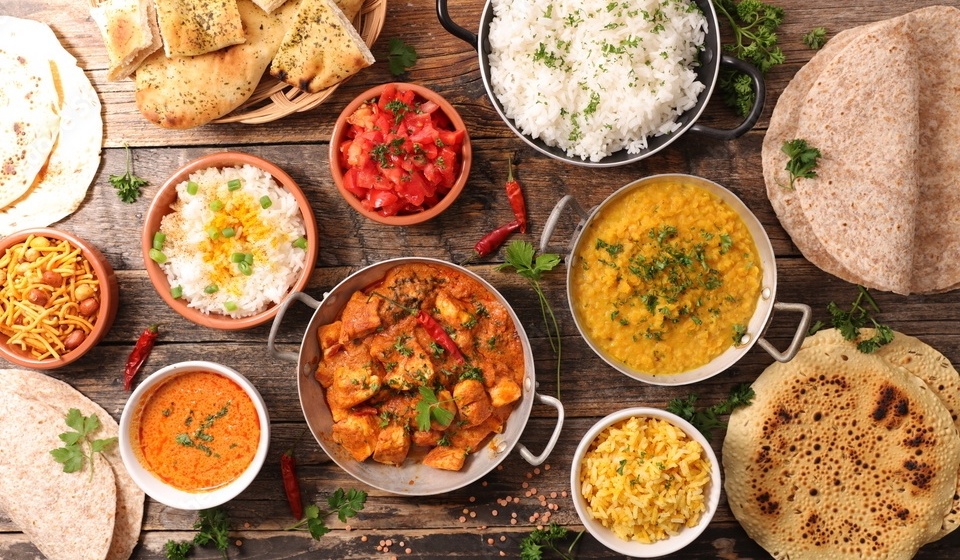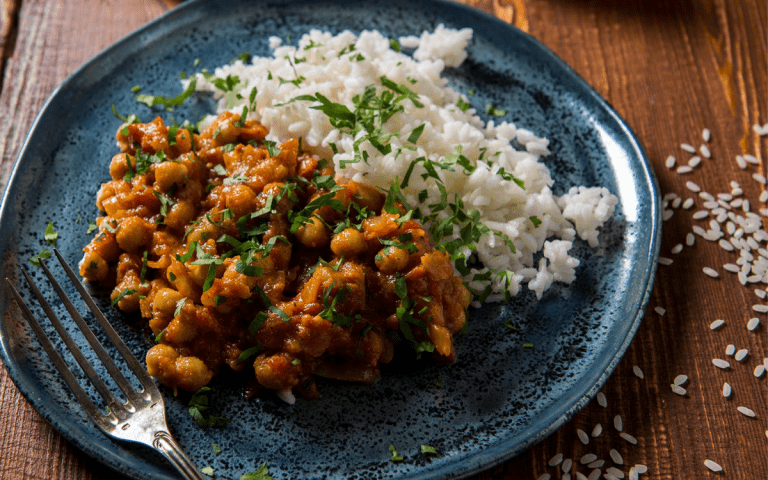South Asia is a broad term to describe a subregion of Asia, consisting of India, Bangladesh, Bhutan, Nepal, Pakistan, Sri Lanka, Afghanistan, and the Maldives. This region is incredibly diverse in landscape and culture and has a population of 1.94 billion people as of 2020. Of this vast population, preliminary studies indicate that approximately 1.4% of people in South Asia have type 2 diabetes, a higher incidence than any other ethnic group. Studies estimate that, by 2030, there will be 120.9 million people with diabetes in South Asia (Gujral, Unjali, et al.). In addition, people from South Asian communities are reportedly 6 times more likely to get type 2 diabetes than the non-South Asian people. Due to the high prevalence of type 2 diabetes in the South Asian community, many try to question why this occurs and what can be done to prevent diabetes.
Continue reading to learn about ideas for why South Asian people are more susceptible to type 2 diabetes, how type 2 diabetes can be handled as a South Asian person, and tips to potentially lower your chances of getting type 2 diabetes.
Why Is Diabetes So Prevalent in South Asian Communities?
As previously mentioned, people in the South Asian community are significantly more likely to be diagnosed with type 2 diabetes in their lifetime. This prevalence is not just seen in older populations; instead, it is a trend for adults from all genders, ranging from ages 20 to 60. Why is this the case?
This is a tricky question to answer because of the range of contributing factors that could cause type 2 diabetes. However, researchers and doctors have some ideas as to why prevalence is so high.
South Asia’s food is diverse and flavourful: Whole grains, vegetables, fruits, and legumes are all used in traditional cuisines. Traditional foods are rich in sugar and fat and only eaten on special occasions. While these foods are staples to South Asian life and are undoubtedly delicious, they are high in sugars and fats, so regular and high intakes of these foods can increase the risk of developing type 2 diabetes.
Additionally, these popular traditional foods combined with fast food popular in western countries can cause a significant increase in the risk of type 2 diabetes because these can cause weight gain and impair insulin action (Diabetes UK).
Outside of dietary habits prevalent in South Asian communities, genetic and physiological factors are also considered reasons for the prevalence of type 2 diabetes in South Asians.
A study by the American Diabetes Association concluded that the reason for this prevalence is because “South Asians may have lower beta cell function and are unable to compensate for higher glucose levels due to insulin resistance” (Kanaya et al.). Other studies pointed to other genetic factors, such as poor fat-burning abilities in muscles, poor response to insulin, and impaired fat metabolism, increasing the chances of type 2 diabetes (BBC News Writers).
How to Handle Type 2 Diabetes as a South Asian Person, and How to Lower Chances of Getting Type 2 Diabetes
Here are some easy and helpful tips to try to manage your type 2 diabetes as a South Asian person:
- According to Diabetes Canada, actively limit the amount of fried food or high-fat food you consume. This is because excess food intake can cause weight gain and can poorly impact your blood sugar management:
- These foods include but are not limited to samosas, pakoras, mathiayi, cookies, cakes, jalebi, and gajar halwa.
- Try to consume more foods that are high in fibre. High-fibre foods help you feel full faster and can lower blood sugar levels:
-
- These foods include but are not limited to rotis, lentils, chapati, dhal, brown rice, vegetable sabzis, and fruits.
- Lower alcohol consumption as it can cause weight gain and affect blood sugar management.
- Increase physical activity to help manage your blood sugar:
-
- These exercises include aerobic activities such as swimming, cycling, walking and running.
- According to Diabetes Canada, try to set a goal for weekly aerobic activities of at least 150 minutes of moderate-to-vigorous intensity (e.g. 30 minutes, five days a week).
- These exercises include aerobic activities such as swimming, cycling, walking and running.
- Limit your pop and fruit juice consumption:
- These drinks have a lot of sugar and will raise your blood glucose levels.
- Instead of opting for fruit juice when you are thirsty, try to make it a habit to drink water.
*Consult your family physician and dietician before making lifestyle changes to ensure they are safe and effective.
According to Diabetes Canada, some great foods to incorporate into your diet that can reduce the risk of type 2 diabetes include:
- Sabji and salads due to their high nutrient and low-calorie levels
- Try limiting potatoes in sabji
- Chicken
- Lean meats
- Low-fat cheese
- Paneer
- Eggs
- Tofu
- Dahi
- Plant oils such as olive oil and vegetable oil
- Basmati rice

Learning to portion food can also help you make better diet choices. Visit this link to learn more about easy methods to learn portion food. Managing type 2 diabetes can be challenging, but it is doable.
Lifestyle changes can improve your life with type 2 diabetes, and potentially limit the diabetes-related obstacles.
Type 2 diabetes is a very prevalent health concern within the South Asian community as it has the highest rates of any other ethnic group. While these high rates may be somewhat attributed to genetic or physiological factors such as lower beta cell effectiveness, there are also some lifestyle and dietary factors that can help with diabetes prevention within the community. Small lifestyle changes can help manage the condition and lower your risk of it. Learning to adapt your lifestyle, to prevent, and manage type 2 diabetes can help you lead a healthy and enjoyable life!
Glossary
Beta cells (located in the pancreas) produce insulin, a hormone that regulates the amount of glucose (a form of sugar) in the bloodstream. In patients with type 2 diabetes, these cells are unable to generate enough insulin to maintain blood sugar control (Diabetes UK).
Impaired fat metabolism
Individuals with a faulty fat metabolism are unable to convert fat for energy, causing physiological functions to stop.
Insulin resistance
Insulin resistance occurs when cells in your muscles, fat, and liver fail to respond to insulin and are unable to utilise glucose from your blood for energy. The pancreas produces extra insulin to compensate, which results in a rise in blood sugar (Dasinger).
References
BBC News Writers. “South Asian Diabetes Risk Clues Found, UK Study Says.” BBC News, BBC, 1 Dec. 2010, www.bbc.co.uk/news/mobile/health-11890419.
Dansinger, Michael. “Insulin Resistance: Symptoms, Causes, Tests, Treatment, and Prevention.” WebMD, WebMD, June 2021, 23, www.webmd.com/diabetes/insulin-resistance-syndrome.
Diabetes Canada Writers. “Just the Basics South Asian.” Diabetes Canada, Diabates Association of Canada, 2014, www.diabetes.ca/DiabetesCanadaWebsite/media/Managing-My-Diabetes/Tools%20and%20Resources/just-the-basics-south-asian-english.pdf?ext=.pdf#:~:text=Eat%20more%20high%2Dfibre%20foods,blood%20sugar%20and%20cholesterol%20levels.
Diabetes UK Editor. “Diabetes, Particularly Cases of Type 2 Diabetes, Is a Growing Health Problem for People of South Asian Descent.” Diabetes UK, Diabetes UK, 15 Jan. 2019, www.diabetes.co.uk/south-asian.
Diabetes UK Editor. “Beta Cells – What They Do, Role in Insulin.” Diabetes.co.uk, 15 Jan. 2019, www.diabetes.co.uk/body/beta-cells.html.
Gujral, Unjali P et al. “Type 2 diabetes in South Asians: similarities and differences with white Caucasian and other populations.” Annals of the New York Academy of Sciences vol. 1281,1 (2013): 51-63. doi:10.1111/j.1749-6632.2012.06838.x
Kanaya, Alka M., et al. “Understanding the High Prevalence of Diabetes in U.S. South Asians Compared With Four Racial/Ethnic Groups: The MASALA and MESA Studies.” Diabetes Care, vol. 37, no. 6, 2014, pp. 1621–1628., doi:10.2337/dc13-2656.
Narayan, K.M.V., Kanaya, A.M. Why are South Asians prone to type 2 diabetes? A hypothesis based on underexplored pathways. Diabetologia 63, 1103–1109 (2020), https://doi.org/10.1007/s00125-020-05132-5.














